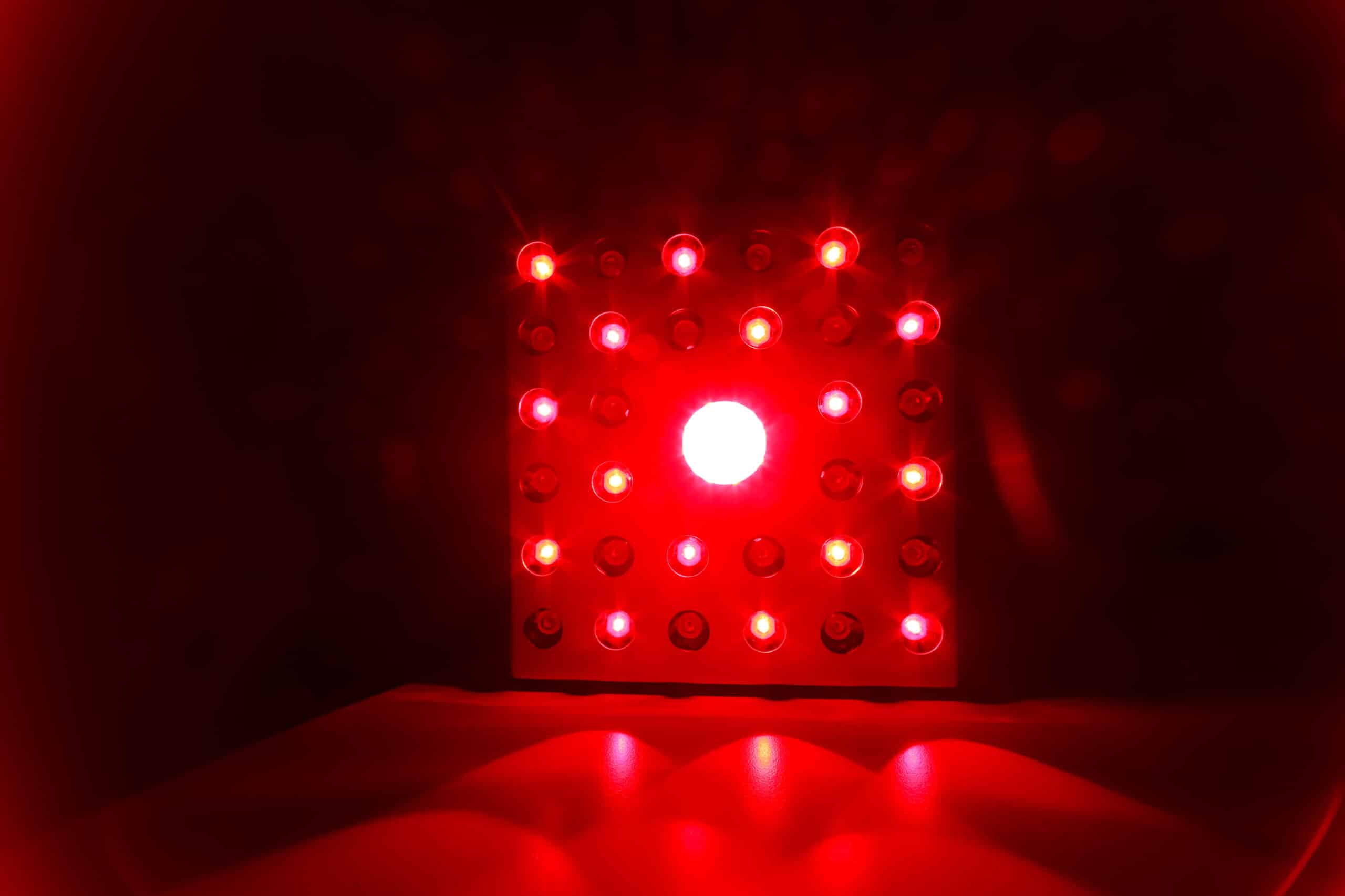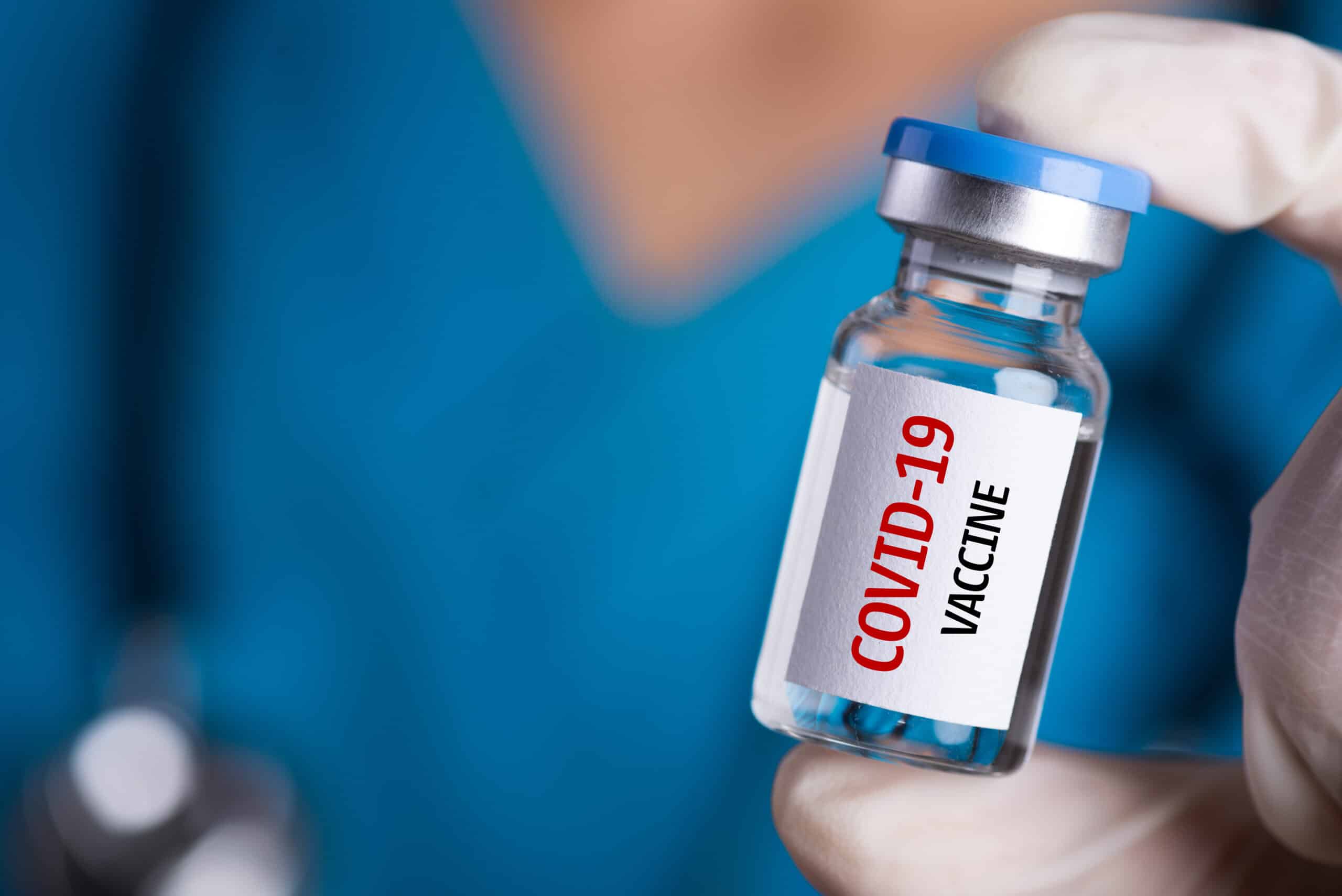You may have noticed a growing buzz around red and infrared light therapy, with everyone from dermatologists to professional athletes embracing it for its wide-ranging benefits—from clearer skin to faster muscle recovery. While many first encounter red light therapy as part of a beauty regimen, emerging research suggests it may also support broader aspects of health and healing. As physicians, we’re often asked about its role in integrative care. So, let’s break it down.
What Is Red and Infrared Light Therapy and How Does It Work?
Red and near-infrared light therapy use specific wavelengths of light to stimulate biological activity in our cells. Unlike UV rays, which can damage the skin, these wavelengths—typically 600-700 nanometers for red light and 800-1000 for near-infrared—are non-ionizing and non-damaging. They penetrate the skin and interact with mitochondria, our cells’ energy producers, prompting them to generate more ATP (adenosine triphosphate), the molecule that powers cellular repair and regeneration.
Red light tends to act more superficially, targeting skin cells to improve collagen production, wound healing, and complexion. Near-infrared light, on the other hand, penetrates more deeply into muscles, joints, and connective tissue, making it a valuable tool for pain relief and muscle recovery.
Although the mechanism is still being explored, the most widely accepted hypothesis involves increased mitochondrial function from the light waves, nitric oxide release (which enhances circulation), and modulation of oxidative stress.
This technology is called photobiomodulation, a term that captures its essence—light influencing our biology in therapeutic ways.
Where Does It Help?
- Skin Health and Appearance
Red light therapy is perhaps most well-supported when it comes to dermatologic applications. Studies have shown it can increase collagen production, reduce wrinkles, improve skin elasticity, and support wound healing. It’s also been helpful for conditions like acne, psoriasis, and eczema by reducing inflammation and bacteria.
One randomized, double-blind, placebo-controlled trial found significant improvement in skin complexion and collagen density after red light treatment. The FDA has approved low-level laser therapy for aesthetic use, and it’s no surprise that many dermatology clinics now offer it as a non-invasive add-on to topical treatments, chemical peels, or microneedling.
- Hair Regrowth
Another area of interest but which requires more study is hair restoration, particularly in androgenetic alopecia. A 2017 critical assessment of the evidence for low level laser therapy indicated poor quality studies thus far and more research needed. A 2020 meta-analysis of randomized controlled trials conducted by the American Society for Laser Medicine and Surgery concluded that low-level laser therapy significantly improved hair density and thickness in both men and women with pattern hair loss.
- Pain Relief and Muscle Recovery
Light therapy may also play a role in musculoskeletal health. Some evidence supports its use in reducing joint pain, speeding post-exercise muscle recovery, and alleviating symptoms in conditions like osteoarthritis and tendinopathies. A systematic review published in Pain Research and Management concluded that red and infrared therapy significantly reduced pain and improved physical function in people with knee osteoarthritis.
Athletes also benefit. A 2016 pilot study showed reduced return to play time with phototherapy in university athletes after injury. In a very small controlled trial, volleyball players who received red light therapy had less post-exercise muscle soreness and better performance recovery than those who didn’t. However, the overall quality of studies on muscle recovery is variable, and more robust data are still needed.
- Energy, Sleep, and Mood
The evidence here is more mixed. In theory, stimulating mitochondrial activity may enhance cellular energy and help regulate circadian rhythms, particularly when red light is used in the morning. A small pilot study suggested near-infrared light improved sleep in elite athletes, and another reported improvement in mood among individuals with depression after transcranial photobiomodulation. Another study of adults with a self-reported sleep complaint showed potential therapeutic benefits to sleep and daytime function after red and near infrared therapy. However, these studies often have small sample sizes and limited replication.
While some patients report feeling more energized or sleeping better after red light therapy, we need more high-quality trials to draw firm conclusions. This is an area of exciting potential, but it’s early days.
Is It Safe?
Red and infrared light therapy are generally considered very safe when used appropriately. Unlike lasers or UV light, they do not cause burns or DNA damage. Treatments are painless, non-invasive, and often well-tolerated.
That said, a few side effects can occur:
- Temporary skin reactions – mild redness, dryness, or itching
- Eye strain or sensitivity – especially if used on or near the face; protective eyewear is recommended
- Fatigue or headaches – rare, but sometimes reported with overuse
- Warming or overheating – more common with near-infrared, particularly in higher-powered panels
- Overstimulation near bedtime – using near-infrared light too late in the evening can be activating for some individuals
Who Should Avoid It or Use It With Caution?
While safe for most people, red light therapy may not be appropriate for everyone. We recommend speaking with your doctor if:
- You’re pregnant – safety hasn’t been fully established
- You have a history of skin cancer or are undergoing cancer treatment
- You have photosensitive conditions (e.g., lupus, porphyria) or take medications that increase light sensitivity
- You have epilepsy – especially if considering a device with pulsing or flickering light
- You have hyperthyroidism – avoid using over the neck/thyroid area
- You have black ink tattoos – which may heat up or cause blistering with light exposure
- You’re prone to hyperpigmentation – consider lower intensity and shorter sessions
How Often Should You Use It?
This depends on your goals and the power of the device. In general:
- Skin health and anti-aging: 3–5x/week for 10–20 minutes
- Muscle recovery and pain relief: 4–7x/week for 15–30 minutes
- Hair regrowth: 3x/week for 15–25 minutes over several months
Consistency is key. Most users report noticeable benefits within 4–8 weeks, though chronic conditions often require longer use.
What Should You Look for in a Home Device?
If you’re shopping for an at-home red or infrared light device, quality matters. Here’s what we suggest keeping in mind:
- FDA Registration: Look for devices registered as low-risk Class II medical devices. This doesn’t guarantee efficacy, but it signals regulatory oversight.
- Third-Party Testing: Reputable companies will provide lab-verified specifications (e.g., irradiance, wavelength accuracy).
- Wavelength Range: Ensure the device emits red light (600–700 nm) or near-infrared (800–1000 nm), depending on your goals.
- Irradiance (Power Output): A minimum of 20–30 mW/cm² at 6–12 inches is reasonable for skin health; for deeper tissues or muscle recovery, 50–100 mW/cm² may be needed.
- Treatment Area: Panels cover more surface area and reduce treatment time. Handhelds are more portable but less efficient for large regions.
Some reputable brands have earned a good reputation for transparency and device performance, but the market is still evolving. If you’re curious about specific products, we’re happy to discuss options—though we currently do not endorse a single device.
Final Thoughts
Photobiomodulation therapy (PBMT), which involves exposure to red or near-infrared light, has demonstrated potential benefits in areas such as skin rejuvenation, hair regrowth, and musculoskeletal recovery. These effects are thought to be mediated by mitochondrial stimulation and modulation of oxidative stress and inflammation. While preliminary studies suggest possible applications in improving sleep quality and mood, the evidence in these domains remains limited and inconsistent. Overall, PBMT has a favorable safety profile when used appropriately, and may serve as a supportive tool in a broader wellness or therapeutic plan. If you’re considering whether photobiomodulation may be aligned with your health goals, we, at Peninsula Doctor, are available to guide you through the current evidence and appropriate use cases.
Warm regards,
Dr. Ian Kroes, Dr. David Hiroshima, Dr. Judy Kim



